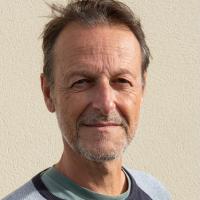
Agroecology Reading time 10 min
Hervé Vaucheret: the passion of the unexplained
Published on 29 November 2021
Explore the unexpected
This discovery launched efforts to understand self and nonself recognition mechanisms in plants
"When I started my biology studies, we knew that plants were sometimes able to overcome a viral infection, but we didn't know the mechanisms underlying this process. My team's work helped identify one of these mechanisms – by chance, because I was working on a completely different subject," summarizes Hervé Vaucheret. Studying unexpected results like these has allowed Hervé to make remarkable advances during a career that includes 135 publications, over 28,000 quotations, and numerous scientific awards.
While completing his thesis in the 1980s, Hervé observed that when he inserted a transgene into a plant to study its expression, this transgene was sometimes ‘silenced’, gradually, as if a silencing factor spread from a given point through the plant tissues. This spatial spread was reminiscent of plants spontaneously recovering from virus infection, a phenomenon first described in 1928.
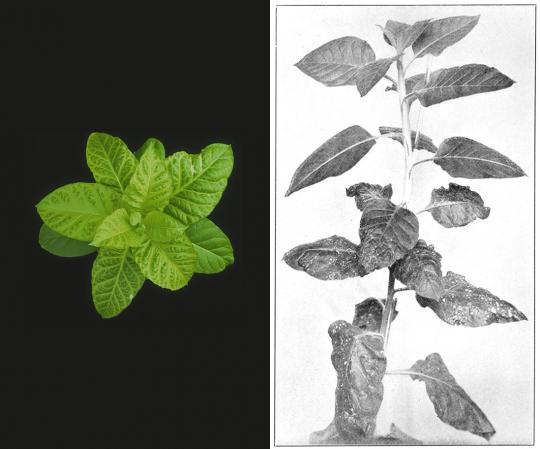
This comparison suggested that plants "switch off" viruses in the same way they sometimes turn off transgenes.
A few years later, Hervé Vaucheret's team confirmed this hypothesis by showing that a plant in which gene silencing mechanisms are inhibited is unable to resist a virus.
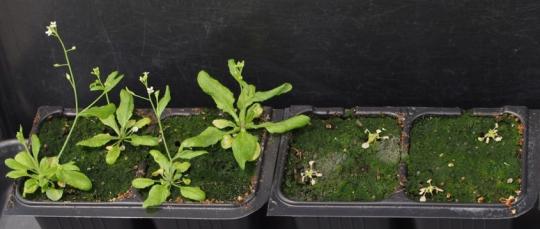
This discovery launched efforts to understand self and nonself recognition mechanisms in plants. Little by little, Hervé Vaucheret's research uncovered the unknown: how a plant defends itself against genes perceived as intruders, but also how it corrects functional anomalies in its own genome and regulates driving factors of evolution such as gene duplication and transposable element ‘jumping’. These mechanisms are found in other organisms such as invertebrate animals, fungi and ciliates.
Read more: understanding silencing mechanisms
To understand how silencing works, we must enter the realm of the genome: double-stranded chromosomal DNA carries genes, which are transcribed into single-stranded RNA molecules, called "messenger RNA", which serve as guides for protein synthesis. In a cell, there are essentially double-stranded DNA and single-stranded RNA. Double-stranded RNA are abnormal forms that are recognized by specialized enzymes. The phenomenon of silencing is based on this abnormality: certain RNA from transgenes, transposable elements or viruses are transformed into double-stranded RNA, which are ‘enemies’ to the cell. They are then cut into "small RNAs" that guide a degrading enzyme to the messenger RNA of these transgenes, transposable elements and viruses, and destroy them. The small RNAs spread from cell to cell, propagating the silencing phenomenon throughout the plant.
The gene silencing mechanism is a fast and effective "super-defence" system of sorts, used to react to a danger such as the insertion of a transgene or transposable element in a genome, or the exponential proliferation of a virus. Alongside this super-defence system, a local "inner-defence" system coexists in other cellular compartments. This system continuously monitors endogenous gene expression and eliminates abnormal messenger RNA through a mechanism different from silencing, without forming mobile small RNAs. Cell health relies on a balance between these two defences. If local defences are inactivated, the silencing super defence attacks the abnormal endogenous messenger RNA by producing small RNAs that eventually attack normal endogenous messenger RNAs as well, resulting in the death of the cell.
Trust, the driving force behind research
Researchers give their best in a climate of trust, not scrutiny
When an unexpected result is observed, one can choose to ignore it and classify it as an artifact linked to the testing environment. Alternatively, others can take another look, to find out what it means. Hervé tends to dig, and has done so with determination, characterizing thousands of transgenic plants to test the reproducibility of silencing. "I’ve been very fortunate to work with research directors who trusted me. I am particularly grateful to Jean-Pierre Bourgin and Michel Caboche. Michel encouraged me to be independent and sponsored my participation in the first European project on gene silencing in 1993, with only six laboratories involved.”
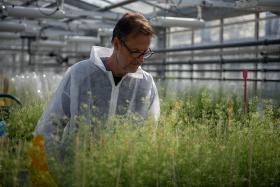
“Jean-Pierre Bourgin, whose name graces one of the Institute’s joint research units (the IJPB1), has instilled a philosophy of trust and resource sharing between teams, which is, in my opinion, the best way to drive research. This collaborative approach makes it possible to absorb the variations in funding that I, like others, have faced. In France, research is managed in such a way that we are asked to program everything without knowing what funding or what teams we will have in the future. By pooling resources at the IJPB, we can develop fundamental research programmes while taking risks.”
“But long-term research programs only make sense if they are sustainable. And for that, it is absolutely essential to preserve a research system based on teams involving several permanent staff.”
Useful research and knowledge sharing
Initially, Hervé Vaucheret planned to work in oncology for its major importance in public health. He chose plants for the freedom it offered, both for his work and from the ethical issues involved in using animal models.
"Research is always fun – but when you find, that’s where the problems begin!” Hervé uses humor to express the difficulty of reporting his results, especially to a non-scientific audience. On the subject of popularization, he likes to quote Aldous Huxley’s Brave New World Revisited: “We must simplify, but not to the point of falsification… concentrate upon the essentials of a situation, but without ignoring too many of reality’s qualifying side issues… to tell, not indeed the whole truth…but considerably more than the dangerous quarter-truths and half-truths which have always been the current coin of thought”. Inspired by this standard, Hervé is keenly committed to the sharing of knowledge, which in fact underpins his scientific career. He chose public research above all to advance knowledge and share it as widely and freely as possible.
(1) IJPB : Institut Jean-Pierre Bourgin.
What's Next ?
Much remains to be learned about the mechanisms of gene silencing, in particular its triggers: how are transgenes, transposable elements and viruses recognized as intruders in a genome, and how are they distinguished from endogenous genes? What triggers their silencing in certain plants and not in others? These are some of the questions Hervé plans to explore in the next ten years…
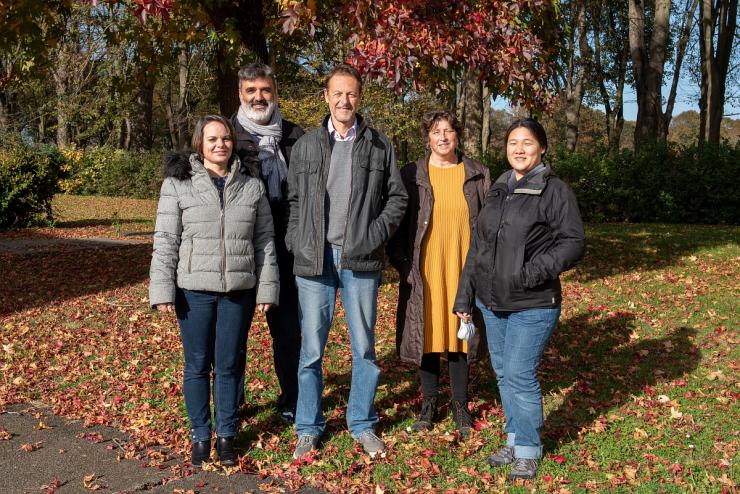
THE INRAE AWARD?
"This award is most importantly a reflection of IJPB, in recognition of this internationally renowned institute and the success of its collective approach to research".
Mini-CV
59 years old, married, three children
- Education
1985: First-year Master’s degree in Biochemistry from the Université Pierre et Marie Curie, Paris
1986: Second-year Master’s degree in Genetics from the Université Pierre et Marie Curie
1989: PhD in Molecular Genetics from the Université Pierre et Marie Curie
1996: Accreditation to supervise research at the Université Paris-Sud, Orsay - Career
1989: Joined INRAE on Michel Caboche's team, Versailles
1993 to present: Director of the "Epigenetics and small RNA" team, INRAE Versailles
2007-2010: Deputy Director of the Cellular Biology Laboratory, INRAE Versailles
2018 to present: Scientific Manager of Experimental Facilities, IJPB, INRAE Versailles - Awards and honours
Permanent member of the European Molecular Biology Organization (EMBO) since 2005
Vermeil medal, French Academy of Agriculture in 2002
Prix Jaffé, French Academy of Sciences in 2003
Prix Eugénie de Rosemont, Chancellerie des Universités d’Ile-de-France in 2004
CNRS Silver medal in 2005
Grand Prix scientifique de la Fondation Louis D., French Academy of Sciences in 2009
INRAE Lifetime Achievement Award in 2021 - Hobbies: Literature, music, cycling, travel
